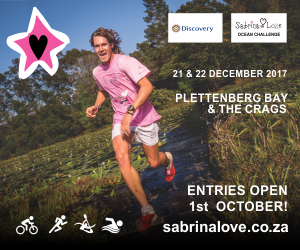
In his paddling element. Graham Bird at Expedition Africa 2016. Photo: Peter Kirk
Graham Bird is one of the leading figures in South Africa’s adventure racing world. He has been involved in the sport since 1986, and has been one of South Africa’s top canoeists since the early 90’s.
Graham now focuses his energies on competing in adventure racing, trail running, mountain biking, canoeing, and multisport events around the country. He is also the leader of one of the world’s top adventure racing teams, the Merrell Adventure Addicts.
Here are some valuable tips about paddling for adventure racers that are new to the sport:

Graham Bird and Tatum Prins at Expedition Africa 2016. Photo: Peter Kirk
1. Know what you’re doing.
Paddling is one of the three main disciplines in adventure racing, so we need to be competent at it. The amount of paddling can vary depending on the race location, so in races with a lot of paddling it can play a huge role in the success of the team.
2. Just be consistent.
Of the three main disciplines, paddling tends to be the one that has the least opportunities for big gains or losses.
The boats that are generally used in AR nowadays are all very stable, slow boats. They create very little speed differential between good, strong, experienced paddlers and weaker, less experienced paddlers. You’ll find that navigation on the paddling legs is generally easy, and does not present opportunities for varied route choices.
3. Test the waters!
Paddling legs can vary from sea kayaking, gentle river paddling, fast flowing white water, to flatwater dam paddling. You need to be familiar with all of them; learn how to read the water flow and what it does to the boat.
Pack rafting is starting to become a bit more prominent in AR’s around the world now, so it would be a good idea to get used to that too.
4. You need to get out and paddle.
There is no substitute for actual paddle training and getting used to sitting for long periods in the boat. Rather prepare your hands and deal with those nasty blisters before the time!
There are no “quick” solutions. Like anything, the more you do the easier it becomes.
5. Don’t slack off.
The stable plastic sit-on-tops are now pretty much standard in AR’s, and they are significantly easier to paddle than a proper racing canoe. Adventure racers can get away with a lot less paddling training or skill these days.
But with that said, I still recommend that teams paddle at least 2-3 times a week. Preferably on the slow sit-on-tops which have a different feel and technique to paddling a faster racing canoe.
6. Choose the right paddle.
I recommend investing in a split paddle for AR. It’s easy to carry and pack. There’s no point having a light small one that is easy to carry but useless if you fall in the water and actually need it to save your life.
Another article you’ll like
Merrell Mentors: master the art of trekking
Follow the Merrell Adventure Addicts



No comments yet.